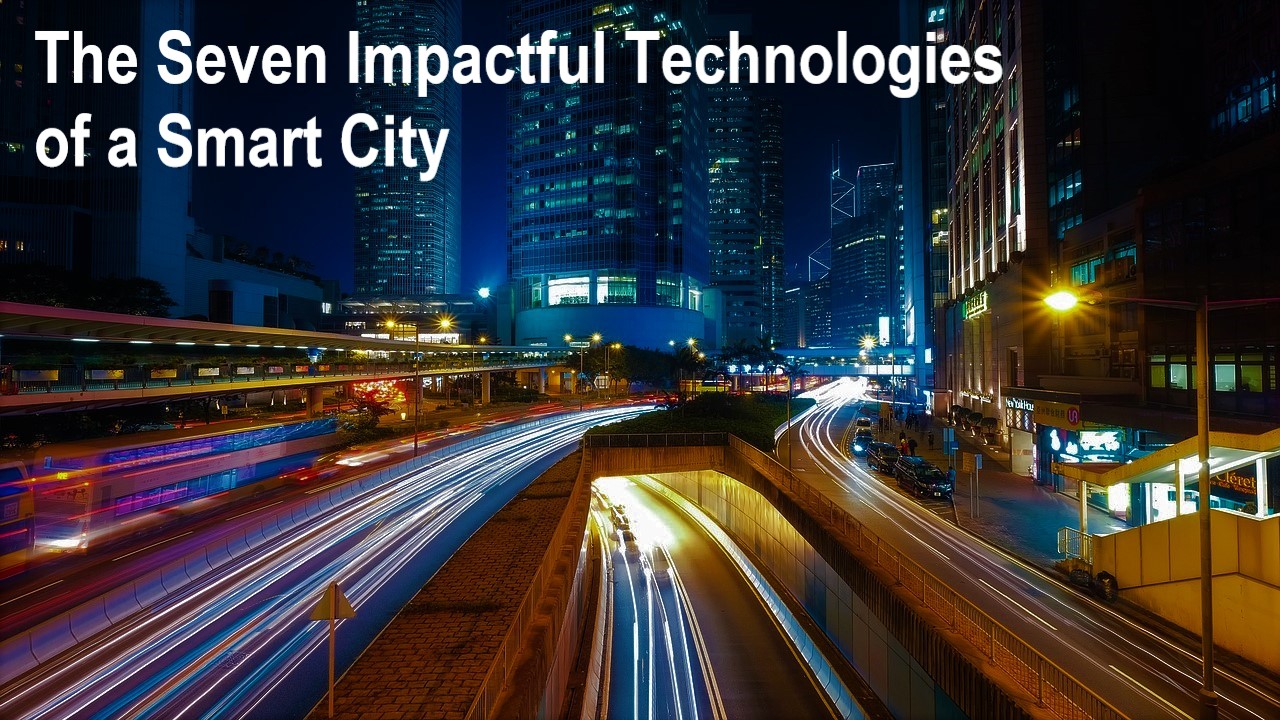

 The Seven Impactful Technologies of a Smart City
The Seven Impactful Technologies of a Smart City
In our previous post, The Nine Critical Applications of a Smart City we examined the functional responsibilities of a city as well as the expectations and needs of citizens and the business community. We defined these as:
In this post we’ll examine the foundational technologies used to achieve dramatic improvements in features, efficiency and cost effectiveness in each of those domains.
Instrumentation and Control Systems are how a smart city monitors and controls the operational parameters of their electric distribution and metering network, their water system, transportation network and more. Instrumentation provides the raw sensory input of a smart city. This includes smart meters for electricity, water and gas; air quality sensors; cameras and Intelligent Transportation Systems technology on the roadway. Examples include switches, breakers and other devices that let operators measure, monitor and control both on-site and remotely.
Connectivity is machine-to-machine communications and is how the smart city’s devices communicate both with each other and with the management center. Connectivity ensures that data is promptly delivered to where it is analyzed. Examples include citywide WiFi networks, cellular networks as well as networks for electric metering, streetlighting and traffic signal control.
Interoperability ensures that products and services from disparate providers can exchange information and work together seamlessly. Interoperability’s many benefits include allowing city management to choose between many suppliers – thus eliminating long term costly sole source agreements. Interoperability also drives product commoditization – thus driving down the acquisition costs. Lastly, it allows future-proofing a project – a solution can be built out over time without concerns about whether newly added segments will “plug-and-play” with those installed earlier.
Security and Privacy are technologies, policies and practices that safeguard data, privacy and physical assets. Today, the publishing of clear privacy rules and the implementation of a cybersecurity system is of prime importance. Security and privacy is foundational in smart cities efforts as it builds trust with citizens, public agency staff, the business community and other important stakeholder groups. Building this trust is an imperative, as without it, Smart City initiatives may experience significant stakeholder pushback.
Data Management includes processing and storage of data and ensuring its accuracy, accessibility, reliability and timeliness. Data is perhaps the most foundational building block of a smart city initiative. In order to maintain data integrity and value, good stewardship using industry best practices and standards is required – including proper policies around access, authentication and authorization. In order to allow cross-pollenization of applications across a city’s often siloed departments, open data standards should be employed.
Computing Resources include embedded near real-time control system components up to substantial data center server farms. It’s important to define this term broadly as it includes mobile phones, handheld communications device on private first responder networks, and all personal computers on the network. It can include police body cams and other video surveillance systems as well as other edge devices.
Information Analytics create actionable information from the raw data that instrumentation and control system collects. This can include crowd control or gunshot detection analytics in order to determine where to best deploy a police presence, electricity demand response analytics in order to determine the best energy efficiency incentive for customers - in near real-time, and fastest and least expensive routes for transit users.
In The Nine Critical Applications of a Smart City, we examined the functional domains of a Smart City. This post examined the underlying technologies that make dramatic impacts possible.
In future blog posts, we’ll examine each of these applications and the technologies in detail. In addition, we’ll introduce and discuss related concepts in the domain – including a Structured Planning Approach for Smart Cities as well as The Three Pillars of Sustainability and Your Smart City Project.

